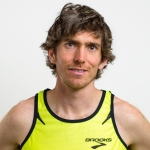 |
Steve White
Photo courtesy of U of M |
As University of Minnesota men's pole vault coach Steve White tells the story, his introduction to his life's passion came when he was 12 years old at St. Louis Park Junior High. He was going out for track. Trying the hurdles when he had what he calls the "arm around the shoulders" moment, when a coach comes up to a young athlete, puts his arm around his shoulders, and gives some advice.
"Son, have you thought about long jumping," his coach told him. As it was field event day, White took the coach's advice and gave it a try. Another arm around the shoulders moment followed. "Have you tried the shot put," the coach told the barely 100 pound 12 year old. Then it was the high jump and finally the pole vault. Even though he was at the bottom of the heap in terms of individual performance, White had found his event, his passion. Even though he wasn't immediately successful, White loved the pole vault. The planning, the precision, the speed, the gymnastics drew him to vaulting.
Decades later he is taking what he's learned and/or experienced and passing on that love, that passion to vaulters of all shapes, sizes, and ability. Though he struggled during his early years in high school, he qualified for the MSHSL championships his junior and senior year under coach Kevin Moorhead at St. Louis Park High. He kept at it at UW LaCrosse as a freshman and the rest of his college career at North Central. He achieved a height of 17'4" as a personal best, but also absorbed the mantra of his coaches at North Central that all their athletes should do their events "for fun and for personal bests because if you're not having fun you're taking it too seriously, and if you're not improving, you're not serious enough."
That balance of fun and achievement/progression is what he tries to pass on to those he coaches. If you talk to people within the track and field community from high school pole vault coaches to the Twin Cities Track Club's Mike Reneau, a 2:13 marathoner, White has already reached something of a legendary status. He's the go to guy for advice, for guidance, and for equipment. The pole vault is unique among track events in that the pole is a major factor in how high you can go. Your ability to master the skills of the vault may improve, but if you don't have the proper pole to handle that improvement, you probably won't clear the next height.
If you want to jump high, you have to have the right speed, the planning skills to set up the standards and pole vault bar in the right position, the athletic ability to sprint down the runway full throttle, plant the pole and thrust and twist over the bar without dislodging it from its perch. And, says White, the ability to handle failure. You miss a lot in vaulting. After a miss you have to correct your mistakes. A bad plant or having the standards set wrong so you may clear the height but knock off the bar on the way up or way down because you didn't calculate the right trajectory of your jump or weren't gripping the pole at the right height, just a few of the many things that can go wrong in a vault.
You can also be using the wrong pole--too short, too stiff, or a combination of either factor. More often, you won't have access to the variety of poles needed to get you to the height you are otherwise capable of vaulting. Neither schools nor athletes have the funds to afford to purchase the proper selection of poles for every ability level of a vaulter. Not one to let such obstacles get in his way, White developed what he called the "Blockbuster(for the now defunct video rental store) model" in an attempt to help rectify this problem.
White bought poles and rented them out to schools. He reinvested the money from the rentals to buy more poles and/or replace those that simply wore out or broke. There is now a inventory of over 400 poles available for rental in his "library of poles." One barrier to higher achievement in the event attenuated. iPads, video cams, or the Gophers filming of each vault that can be played back, analysed at the same time that the other vaults are being recorded, help the technical side of solving technique issues or things that need correcting in the next jump.
In 1998, while coaching at Armstrong High, White and Phil Johnson, who was the coach at Hopkins successfully petitioned the MSHSL to allow girls pole vaulting, almost overnight doubling the number of vaulters in the state. Today, White says, more girls than boys are vaulting. This Spring, working with Reneau and Brit's Pub in downtown Minneapolis, White hopes to bring an elite rooftop vaulting competition to the city to give the sport more visibility and build the fan base.
All this while raising a family, teaching physics, balancing his coaching and that of his wife, who is the Gopher women's vault coach, pursuing advanced degrees, and his own competitive outlet, Masters pole vaulting(a recent best of 15'6"). "It's(vaulting) still very, very fun. I don't know why I'd ever stop." The passion for the sport that he developed three decades ago is still there. White is more than willing to share that passion as this
Flotrack video with
HERE illustrates. It's still fun, and he's still finding ways to improve, and he's passing that message on to all who are willing to listen.



















